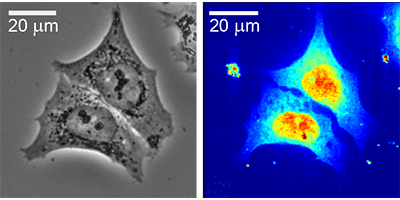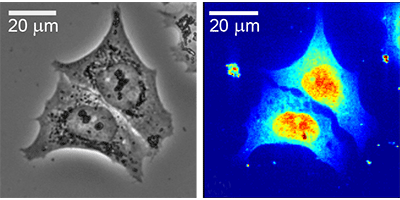Live Cell Imaging
X rays are routinely used to image nanoscale features of biological matter, in which different features are distinguished by how much they scatter the incident x rays. The technique works best when the material being imaged and the surrounding material are different, posing a challenge for imaging live cells, which are predominantly made of, and live in, water. Writing in Physical Review Letters, Sarah Köster from the University of Göttingen, Germany, and her colleagues now demonstrate high-definition x-ray imaging of live cells. Their method allows them to compare living cells to those that are “chemically fixed”—a common preparation method in which cells are preserved using formaldehyde or other chemicals—and to show that fixation can introduce unwanted artifacts into the cells’ structure.
To image the cells, the group designed a microfluidic container made from a material transparent to x rays that reduced unwanted scattering. The cells were grown on silicon nitride membranes (which are also transparent to x rays) and the membranes were placed over a long channel in the microfluidic container. Nutrient-containing solution in the channel kept the cells alive during imaging. The cells were moved through the x-ray beam, which was a few hundreds of nanometers in size, and the scattered signal was detected to form an image. The researchers found that chemically fixed cells, which were imaged under similar conditions, contained additional structures, about 50 nanometers in size, not seen in the live cells. (The fixed cells also lacked smaller structures observed in the live cells.) The findings suggest fixation does in fact alter the composition of cells, which could impact future x-ray imaging studies of biological material and how researchers decide to prepare cells for experiments. – Katherine Wright





